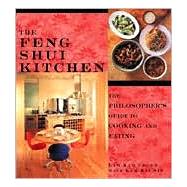| Introduction | 8 | (12) | |||
| Part One THE Energy OF FOOD | 12 | (22) | |||
|
16 | (2) | |||
|
18 | (2) | |||
|
20 | (2) | |||
|
22 | (2) | |||
|
24 | (2) | |||
|
26 | (2) | |||
|
28 | (2) | |||
|
30 | (2) | |||
|
32 | (2) | |||
| Part Two Feng Shui ESSENTIALS | 34 | (38) | |||
|
38 | (2) | |||
|
40 | (2) | |||
|
42 | (2) | |||
|
44 | (2) | |||
|
46 | (2) | |||
|
48 | (2) | |||
|
50 | (2) | |||
|
52 | (2) | |||
|
54 | (4) | |||
|
58 | (2) | |||
|
60 | (2) | |||
|
62 | (2) | |||
|
64 | (2) | |||
|
66 | (2) | |||
|
68 | (2) | |||
|
70 | (2) | |||
| Part Three Preparing AND COOKING | 72 | (38) | |||
|
76 | (12) | |||
|
88 | (2) | |||
|
90 | (2) | |||
|
92 | (2) | |||
|
94 | (2) | |||
|
96 | (2) | |||
|
98 | (2) | |||
|
100 | (10) | |||
| Part Four The Four SEASONS | 110 | (46) | |||
|
|||||
|
116 | (1) | |||
|
116 | (2) | |||
|
118 | (1) | |||
|
119 | (1) | |||
|
120 | (2) | |||
|
122 | (1) | |||
|
123 | (1) | |||
|
124 | (1) | |||
|
125 | (3) | |||
|
|||||
|
128 | (1) | |||
|
128 | (1) | |||
|
129 | (1) | |||
|
130 | (2) | |||
|
132 | (1) | |||
|
133 | (1) | |||
|
134 | (1) | |||
|
135 | (3) | |||
|
|||||
|
138 | ||||
|
138 | (140) | |||
|
140 | (2) | |||
|
142 | (1) | |||
|
143 | (1) | |||
|
144 | (1) | |||
|
145 | (3) | |||
|
|||||
|
148 | (1) | |||
|
149 | (1) | |||
|
150 | (1) | |||
|
151 | (1) | |||
|
152 | (2) | |||
|
154 | (1) | |||
|
155 | (1) | |||
| Authors' Acknowledgments | 156 | (1) | |||
| About the Authors | 157 | (1) | |||
| Index | 158 |








